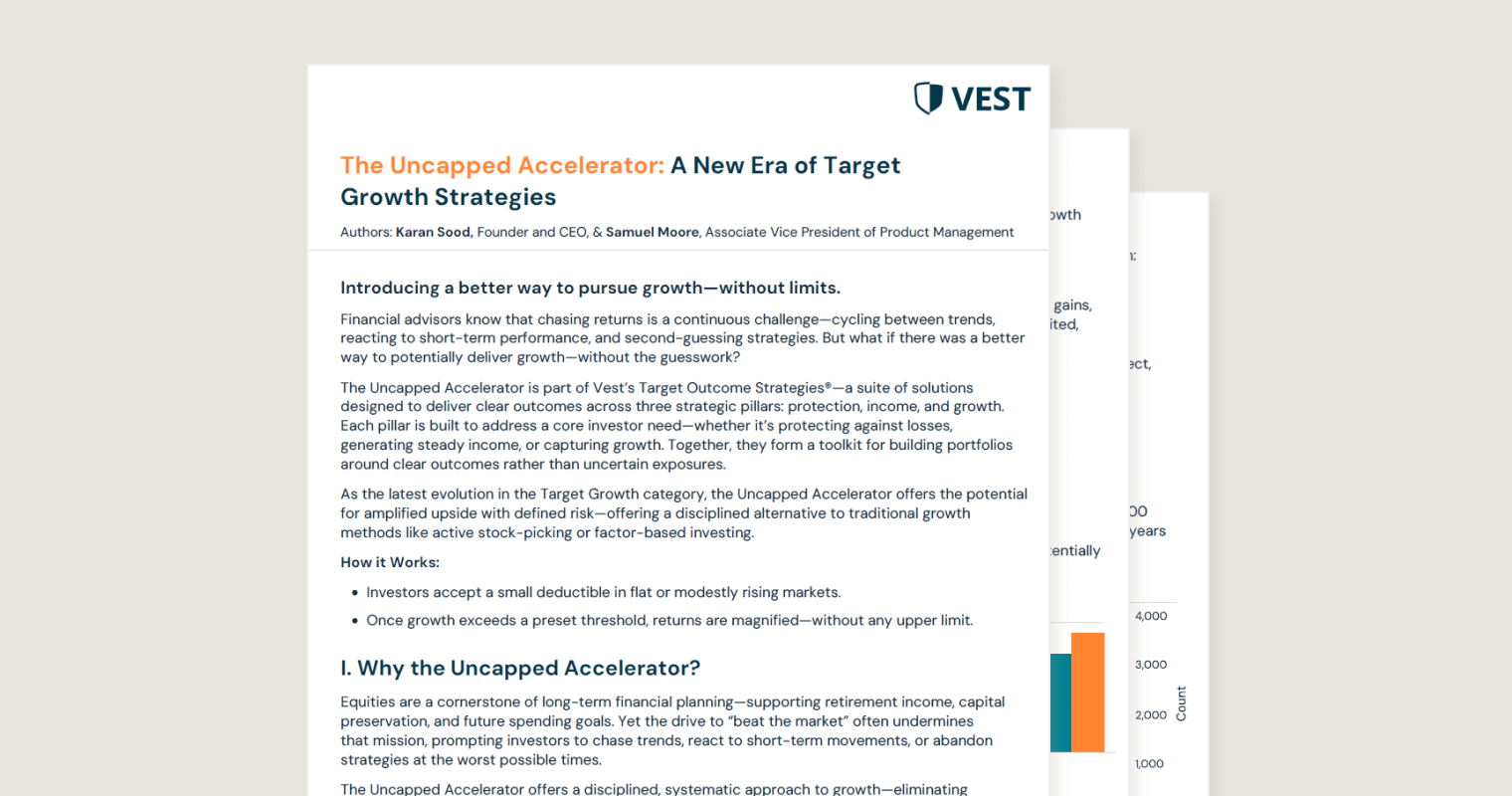Why invest in the Target Growth Strategy?
Seeks to generate additional upside through performance multipliers after a deductible
Many investors rely on equities to fuel long-term growth, increase purchasing power, and meet their financial goals. To access equity exposure, they face a wide range of options—passive indexing, factor-based strategies, fundamental active management, and more.
The Target Growth Strategy seeks to offer something different: a precision-engineered approach that applies a clearly defined, pre-determined multiplier to equity index returns. It is designed to give investors full transparency—knowing exactly which index they’re looking to track and the targeted upside performance multiplier.
Systematic process seeks to remove the guesswork of traditional active management
The return mechanism follows a rules-based process implemented across all Target Growth Strategies.
This seeks to remove the guesswork inherent to traditional active management.
Performance doesn’t rely on choosing the right stocks, sectors, or factors to beat a benchmark.
Instead, it follows a systematic approach that is intended to address the persistent challenge of traditional
active managers underperforming the benchmark over time.
Strategy designed to track downside risk on a one-to-one basis
In addition to upside potential, we recognize investors want to manage risk—especially during downturns.
Unlike traditional active or leveraged strategies, the Target Growth Strategy is designed to track downside one-to-one.
This gives investors the opportunity to capture more upside potential in rising markets, without taking on more risk when markets fall.


